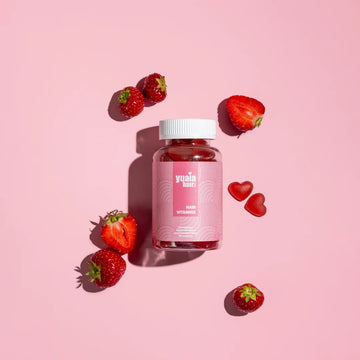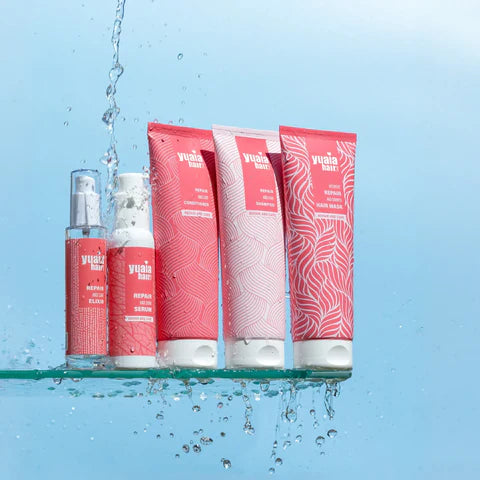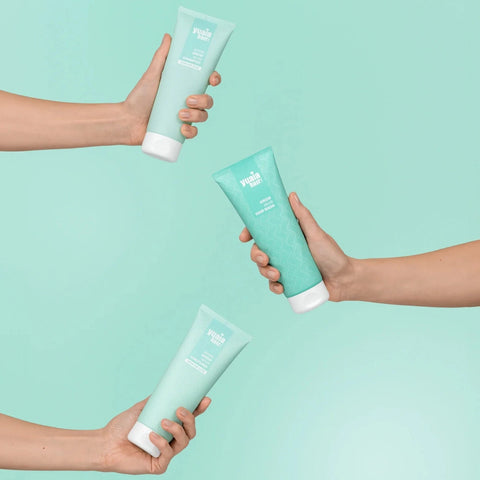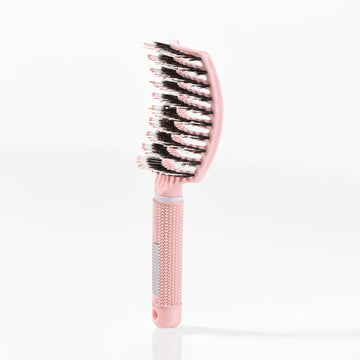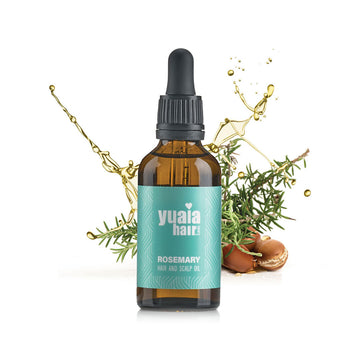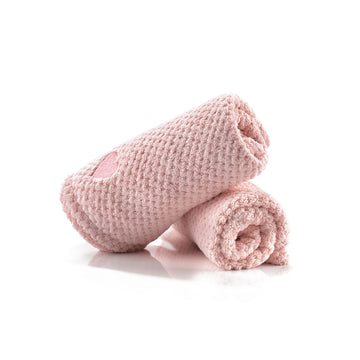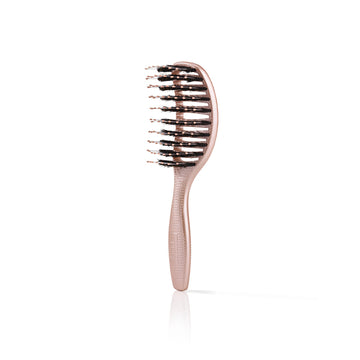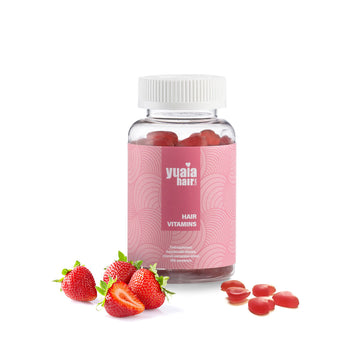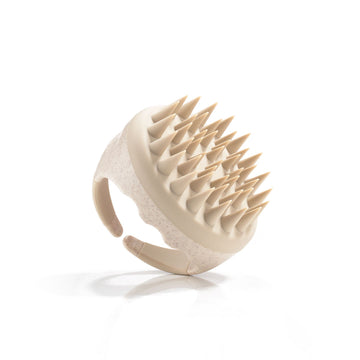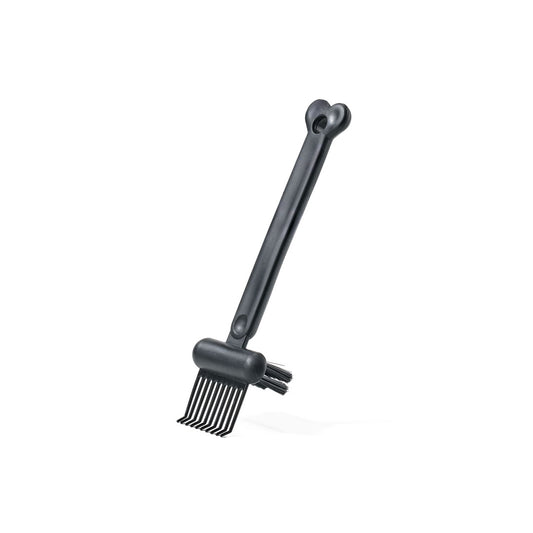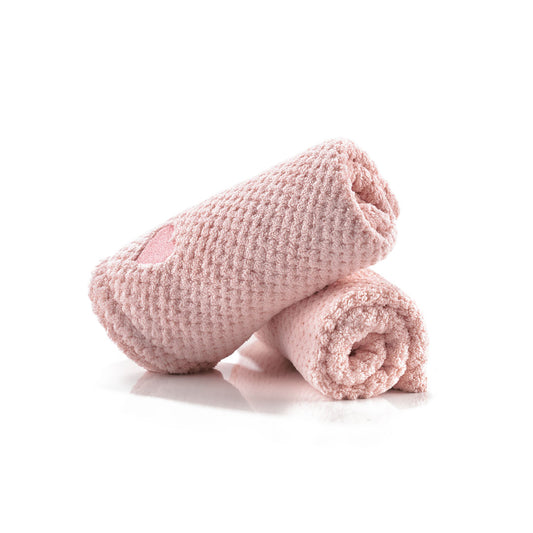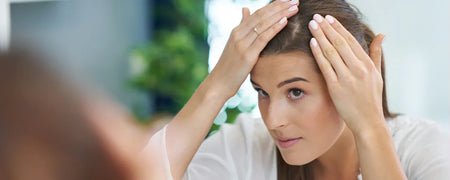
What is the difference between pimples on the scalp and scalp acne?
While "pimples on the scalp" and "scalp acne" are often used interchangeably, they can refer to slightly different conditions. Pimples on the scalp generally describe isolated breakouts, such as small red bumps or whiteheads, that occur due to clogged pores, dirt, or product buildup. These are often mild and temporary, resolving with improved hygiene or targeted treatments.
Scalp acne, on the other hand, tends to refer to a more persistent or severe condition resembling traditional acne. It is often characterized by inflamed pustules, cystic bumps, or painful nodules caused by a combination of excess oil production, bacterial growth, and inflammation. Unlike occasional pimples, scalp acne may require medicated shampoos or dermatologist-prescribed treatments for effective management.
In summary, pimples on the scalp may occur sporadically and are easier to treat, while scalp acne is a more chronic issue that can require consistent care and medical attention. Understanding the severity and triggers can help determine the most appropriate treatment for a healthier scalp.
Why do I get pimples on my scalp?
Pimples on the scalp, often referred to as scalp acne, can be caused by a variety of factors ranging from clogged hair follicles to hormonal imbalances. Understanding the root causes, such as excess oil production, poor hygiene, or the use of certain hair products, is key to addressing and preventing this common condition effectively.
An oily scalp and tight hairstyles can increase the occurrence of pimples on the scalp.
1. Greasy scalp
Excess production of sebum, insufficient hair washing and cleaning, and the use of heavy, oil-based products are some of the causes of pimples on the scalp. When too much sebum is produced on the scalp, it can lead to blockage of the hair follicles and inflammation. Bumps on scalp may also result from inadequate hair washing, as it allows for the accumulation of dirt, bacteria, and excess dead skin cells on the scalp.
The use of heavy, oil-based products can contribute to an oily scalp by clogging the pores and promoting sebum production in the area. It is important to be aware of these factors to prevent pimples on the scalp. Using a shampoo specifically designed for oily scalp or scalp acne can help regulate sebum production and keep the hair follicles clear. Read more about oily scalp here.

2. Accumulation of sweat and tight hairstyles
Accumulation of sweat and impurities in the hair can lead to inflammation of the scalp. Lack of air circulation in the scalp can worsen the problem by creating an environment where bacteria thrive. Friction between the hair and the skin can also contribute to the formation of pimples on the scalp.
3. Hormonal changes
Puberty and hormonal changes can cause increased activity in the sebaceous glands, which can result in pimples on the scalp. Women also experience hormonal changes during pregnancy or menopause that can affect the condition of the skin. Both men and women can suffer from hormonal imbalance that contributes to the appearance of pimples on the scalp.
Bacteria and inflammation also play a role in the development of pimples on the scalp. Using bad products on the hair or lack of hygiene can create an environment where bacteria thrive. Stress and poor diet are additional factors that can affect the body's hormones and lead to problems such as pimples on the scalp or even on the face.
4. Stress and poor diet
Increased stress levels can affect hormones and contribute to inflammatory conditions in the skin. A poor diet with too much sugar or fat can also worsen these inflammatory conditions. In addition, a lack of nutrients such as vitamins A, E, D, B6 and omega-3 fatty acids can have a negative effect on the health of the scalp.
Stress and poor dietary choices can also trigger scalp acne, as the body's hormonal response to stress can increase oil production, leading to clogged hair follicles. Diets high in processed foods and sugars can exacerbate inflammation, making conditions like scalp acne or pimples on the scalp more difficult to manage.
5. Use of bad products
The use of poor hair care products, including shampoos, conditioners and styling products, can contribute to the formation of pimples on the scalp. Some products contain ingredients that can clog pores and irritate the skin, resulting in inflammation and breakouts.
These issues can also lead to scalp acne, as certain products with heavy oils, silicones, or sulfates can block hair follicles and exacerbate irritation. For instance, thick styling gels or waxes may leave residue that builds up over time, creating an environment that promotes scalp acne.
It is important to choose scalp-friendly products that do not contain harmful ingredients. Using non-comedogenic or sulfate-free shampoos can help prevent pimples on the scalp by reducing pore blockage and maintaining a healthy scalp. Additionally, switching to lightweight styling products can minimize buildup and reduce the risk of recurring scalp acne.

6. Allergic reactions
Some people may develop allergic reactions to certain ingredients in hair care products, such as parabens, sulfates or fragrances. These allergic reactions can lead to irritation and pimples on the scalp.
In some cases, allergic reactions can trigger scalp acne, with symptoms such as red, inflamed bumps or itching that worsens over time. Ingredients in hair sprays, gels, or even shampoos may disrupt the scalp's natural balance, making it prone to breakouts.
If you experience pimples after using certain products, you should consider switching to hypoallergenic alternatives. Hypoallergenic or fragrance-free products are less likely to cause irritation and can help prevent both pimples on the scalp and scalp acne. Identifying the specific allergens by consulting a dermatologist can also guide you toward safer options that suit your skin type.
7. Excessive use of styling products
The use of styling products such as hairspray, wax or gel can clog the pores and create a buildup of product residue on the scalp. This can lead to the formation of pimples on the scalp and inflammation. In some cases, excessive use of these products can also trigger scalp acne, particularly if the buildup isn't properly washed away. It is important to use styling products carefully and avoid using too much or too often.
8. Hygiene
Lack of hygiene, such as not washing your hair regularly or not cleansing your scalp properly, can contribute to the formation of pimples on the scalp. It is important to maintain good hygiene and wash the hair with mild, scalp-friendly products to avoid the accumulation of dirt, oil and bacteria.
9. Hairbrushes and towels
The use of dirty hairbrushes or towels can transfer bacteria to the scalp and contribute to the development of pimples. It is important to clean and disinfect hairbrushes regularly and use clean towels to dry hair. Regular cleaning helps minimize bacterial growth, reducing the risk of scalp acne and other infections. Using separate towels for hair and body can also prevent cross-contamination, keeping the scalp healthier and less prone to breakouts. You can read our guide to cleaning hairbrushes here.

10. Genetics
Genetics also play a role in the occurrence of pimples on the scalp. If your parents or siblings tend to have pimples, there is a high probability that you will also experience it. Heredity can affect the skin's tendency to produce excess oil and clog pores, which can lead to the formation of pimples on the scalp.
It is important to note that pimples on the scalp usually do not pose a serious health risk, but they can be bothersome and uncomfortable. If you experience repeated or severe breakouts of scalp pimples, it may be a good idea to visit a dermatologist or professional hair care expert for advice and treatment.
How to get rid of pimples on the scalp
1. Clean the scalp thoroughly
To clean the scalp thoroughly, it is essential to use a mild dandruff shampoo that contains salicylic acid or zinc pyrithione, as these ingredients can help prevent pimples on scalp. Washing your hair regularly is also important to remove excess sebum, dirt, and buildup, which can clog pores and lead to bumps on scalp. For an even more effective cleanse, consider using a specialized shampoo for pimples on scalp to maintain a healthy scalp environment and reduce the risk of irritation.
2. Avoid picking up your hair and avoid tight hairstyles
Avoid tying your hair tightly, as this can create moisture and heat in the scalp, increasing the risk of pimples on scalp. Instead, choose loose hairstyles rather than tight buns or braids to reduce pressure on the scalp and minimize the likelihood of developing bumps on scalp or irritation.
3. Make sure you eat healthy and drink enough water
A healthy diet and sufficient water are essential for a healthy scalp without pimples. Avoid fatty foods that can increase the production of sebum and lead to pimples on the scalp. Instead, eat fresh vegetables, fruits and whole grains, which contain important nutrients to maintain a normal and healthy scalp. Also remember to drink at least 8 glasses of water a day to keep your body hydrated from the inside out.
4. Reduce stress and get enough sleep
When it comes to reducing stress and getting enough sleep, there are some effective methods you can use. Try incorporating relaxation techniques such as meditation or deep breathing into your daily routine to reduce stress levels. It is also important to maintain a regular sleep schedule and avoid screen time before bed to ensure a good night's sleep.

Good products for pimples on the scalp
When it comes to treating pimples on the scalp, there are several products that can be effective. Here are some of the best products to fight scalp pimples:
1. Dandruff shampoo with salicylic acid or zinc pyrithione:
A mild dandruff shampoo that contains salicylic acid or zinc pyrithione can be effective in cleansing the scalp and removing excess sebum and dirt - as well as treating pimples on the scalp. These ingredients help exfoliate the skin and prevent clogging of pores, which can reduce the appearance of pimples.
2. Tea tree oil:
Tea tree oil is known for its antibacterial properties and can be effective in getting rid of pimples on the scalp. In some cases, tea tree oil can also help manage scalp acne by reducing inflammation and targeting bacteria that contribute to breakouts. Its natural properties make it an ideal solution for soothing irritated skin while promoting a healthier scalp environment.
You can try adding a few drops of tea tree oil to your shampoo or use a shampoo that already contains tea tree oil.
3. Aloe vera gel:
Aloe vera gel has natural antibacterial and anti-inflammatory properties that can help get rid of pimples on the scalp. While aloe vera may not directly treat scalp acne, its soothing properties can help reduce redness, inflammation, and discomfort associated with breakouts. This makes it a useful complementary remedy for calming sensitive or itchy areas of the scalp. Read about our guide on aloe vera for hair here.
Apply a thin layer of aloe vera gel directly to the affected areas and leave it on for 15-20 minutes before rinsing it off.
Products with aloe vera
4. Apple Cider Vinegar:
Apple cider vinegar is known for its cleansing properties and can help balance the pH of the scalp, which can therefore help get rid of pimples on the scalp. Dilute apple cider vinegar with water in a ratio of 1:1 and apply it to the scalp after washing hair. Leave it on for a few minutes before rinsing it off. Read our guide on apple cider vinegar for hair here .
Always remember to read and follow the instructions on the product, and if you experience severe or persistent problems with pimples on the scalp, you should see a doctor or skin care specialist for further advice and treatment.
Are pimples on the scalp a common skin condition?
Yes, pimples on the scalp are a common skin condition that affects many people. It is known as "folliculitis" and occurs when the hair follicles on the scalp become blocked and infected. This can result in the formation of red, itchy pimples or boils that can be painful.
There are several factors that can contribute to the development of pimples on the scalp. One of the most common causes is overproduction of sebum, which can lead to blockage of the hair follicles. This can happen due to hormonal changes, stress or poor scalp hygiene.
In addition, the use of certain hair products such as oils, gels or waxes can also contribute to the formation of pimples on the scalp. These products can clog hair follicles and promote bacterial growth.
It is important to treat pimples on the scalp to avoid further infection or scarring. There are various treatment options, including medicated shampoos with antibacterial ingredients such as benzoyl peroxide or salicylic acid. These shampoos can help cleanse the scalp and reduce inflammation.
If the pimples on the scalp are severe or persistent, it may be necessary to consult a dermatologist. They can prescribe the correct treatment.
To prevent pimples on the scalp, it is important to maintain good scalp hygiene. Wash your hair regularly with a mild shampoo and avoid excessive use of hair products. Also, keep the scalp clean and dry by avoiding touching it with dirty hands or towels.
Also, avoid scratching or picking at the pimples on the scalp, as this can worsen the infection and lead to scarring. If necessary, a cool compress or topical treatments such as tea tree oil can be used to relieve itching and reduce inflammation.
 2-5 day delivery
2-5 day delivery
 25.000+ satisfied customers
25.000+ satisfied customers
 Satisfaction Guarantee
Satisfaction Guarantee

